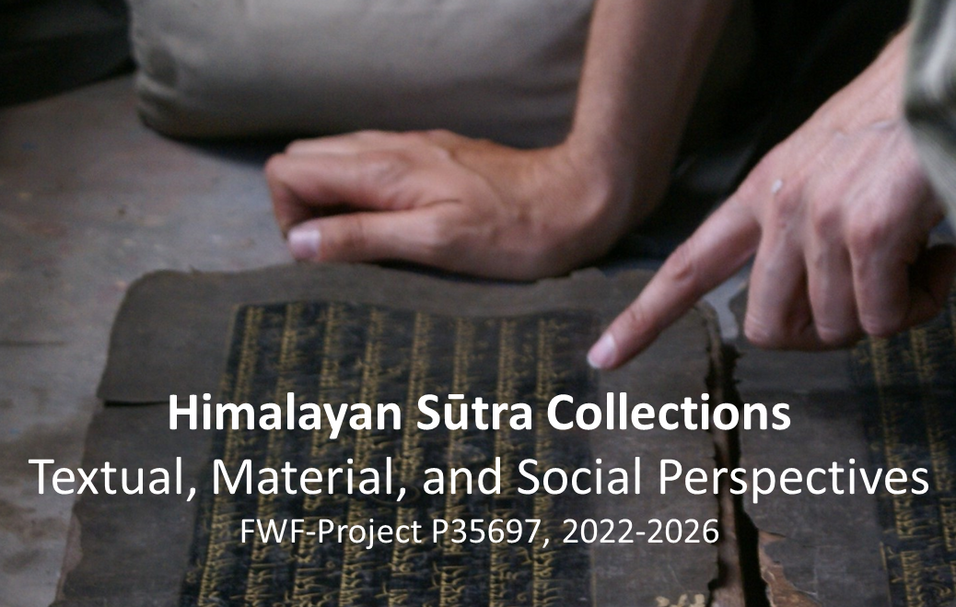Members:
- Bruno Lainé
- Helmut Tauscher
External collaborators:
- Jonathan Silk (Leiden University)
- Agnieszka Helman-Ważny (Universität Hamburg)
- Daniel Berounský (Charles University Prague)
- Nyima Woser Choekhortshang (Charles University Prague)
Project website: https://tmpv.univie.ac.at/
The project is part of a long-term research initiative under the label “Tibetan Manuscript Project Vienna” (TMPV), which aims to document, preserve, and research endangered manuscript collections of Tibetan canonical literature in the Himalayan borderlands. The particular focus of the current research phase is on so-called “Sūtra collections,” which represent a model of canonical collection that precedes the more commonly known later “mainstream Kanjurs,” and differs from the latter not only in structural organisation but also with regard to textual contents. These Sūtra collections therefore provide unique opportunities for studying the formation of the Tibetan canon before its consolidation in the fourteenth century. In the context of the preceding project, several Sūtra collections were identified in different localities in the remote Himalayan areas of Mustang and Dolpo and already partly digitised. The current project will continue these documentation efforts, add further material from manuscript collections yet to be documented, and, most importantly, develop a comprehensive analytical approach for studying these Sūtra collections from different research perspectives.
A preliminary aim of the project is to secure the manuscript collections through digitisation and to make the respective images and catalogue data openly accessible within the Vienna-based “Resources for Kanjur & Tanjur Studies” (rKTs) database. Secondly, the wealth of this material will allow for a comprehensive comparative study aiming at delineating the canonical model of Sūtra collections with regard to its contents and historical development, but also address material features of the manuscript collections and their social significance for local communities. In its analytical scope, the project develops a comprehensive approach that combines textual, material, and social perspectives. Its methods are largely philological but will also draw from expertise in material studies and social anthropology, enhanced through a network of international collaborations.
Research results from this project are expected to advance the field of “Kanjur Studies” with regard to both primary sources as well as analytical approaches. While common notions of “the Tibetan canon” are dominated by the canonical model of later mainstream Kanjurs and by a limiting focus on studying their textual contents, the project will counter both of these imbalances by a) concentrating on collections that developed before and besides the mainstream traditions and by b) giving more attention to their material features and social embedding.

